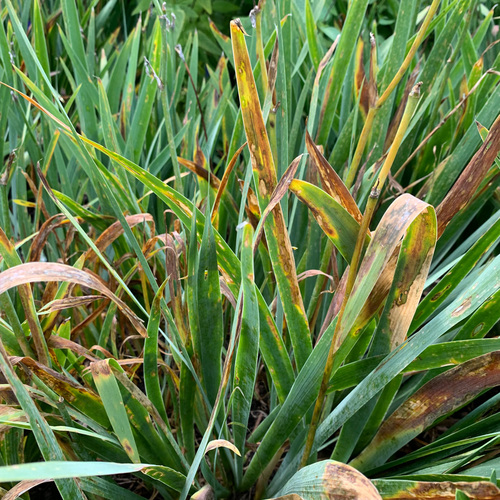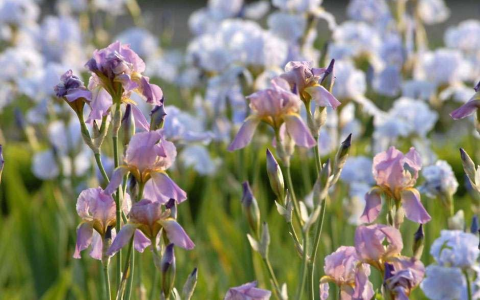Okay, so, I’ve been growing irises for a while now, and let me tell you, they’re usually pretty chill. But sometimes, you run into some stuff that can really mess them up. I wanted to share what I’ve learned about dealing with these problems, just in case any of you are having the same issues.
Yellowing Leaves and Mushy Roots
First off, I noticed some of my iris leaves were starting to turn yellow, especially in the middle. Didn’t think much of it at first, but then the whole middle part just collapsed and turned brown. When I dug up the rhizome (that’s the root-like part), it was all mushy and smelled really bad. I mean, really foul.

Turns out, this is something called root rot. It’s a real pain. From what I’ve read, it’s usually caused by some kind of bacteria. Once I figured that out, I started to be more careful about overwatering. Irises don’t like to sit in soggy soil. It’s better to let the soil dry out a bit between waterings. I also learned that good drainage is super important, so I made sure to plant my irises in a spot where water doesn’t pool up.
If you are the same as me, encountering this problem, the following experiences are worth learning:
- Watering: I’ve started to be more careful about overwatering. Irises don’t like to sit in soggy soil, so I let the soil dry out a bit between waterings.
- Drainage: I’ve made sure to plant my irises in a spot where water doesn’t pool up. Good drainage is super important to prevent root rot.
Leaf Spots
Another thing I’ve dealt with is leaf spots. These are basically little spots that show up on the leaves. They can be different colors, like brown or reddish. If you don’t do anything about them, they can spread and make the whole leaf look sick.
There are specific experiences that I had taken for reference:
- Removing Affected Leaves: When I see a leaf with spots, I just cut it off and throw it away. I don’t want those spots to spread to other leaves.
- Improving Airflow: I also make sure there’s good airflow around my irises. This helps to keep the leaves dry and makes it harder for diseases to take hold. I do this by spacing out the plants a bit more when I plant them.
Anyway, I just wanted to share my experiences with these iris problems. It’s a learning process, and I’m sure there’s more I’ll discover as I keep growing them. But hopefully, this info helps some of you out there keep your irises happy and healthy. It’s all about paying attention to your plants and figuring out what they need. Trust me, it’s worth the effort when you see those beautiful blooms in the spring!




















